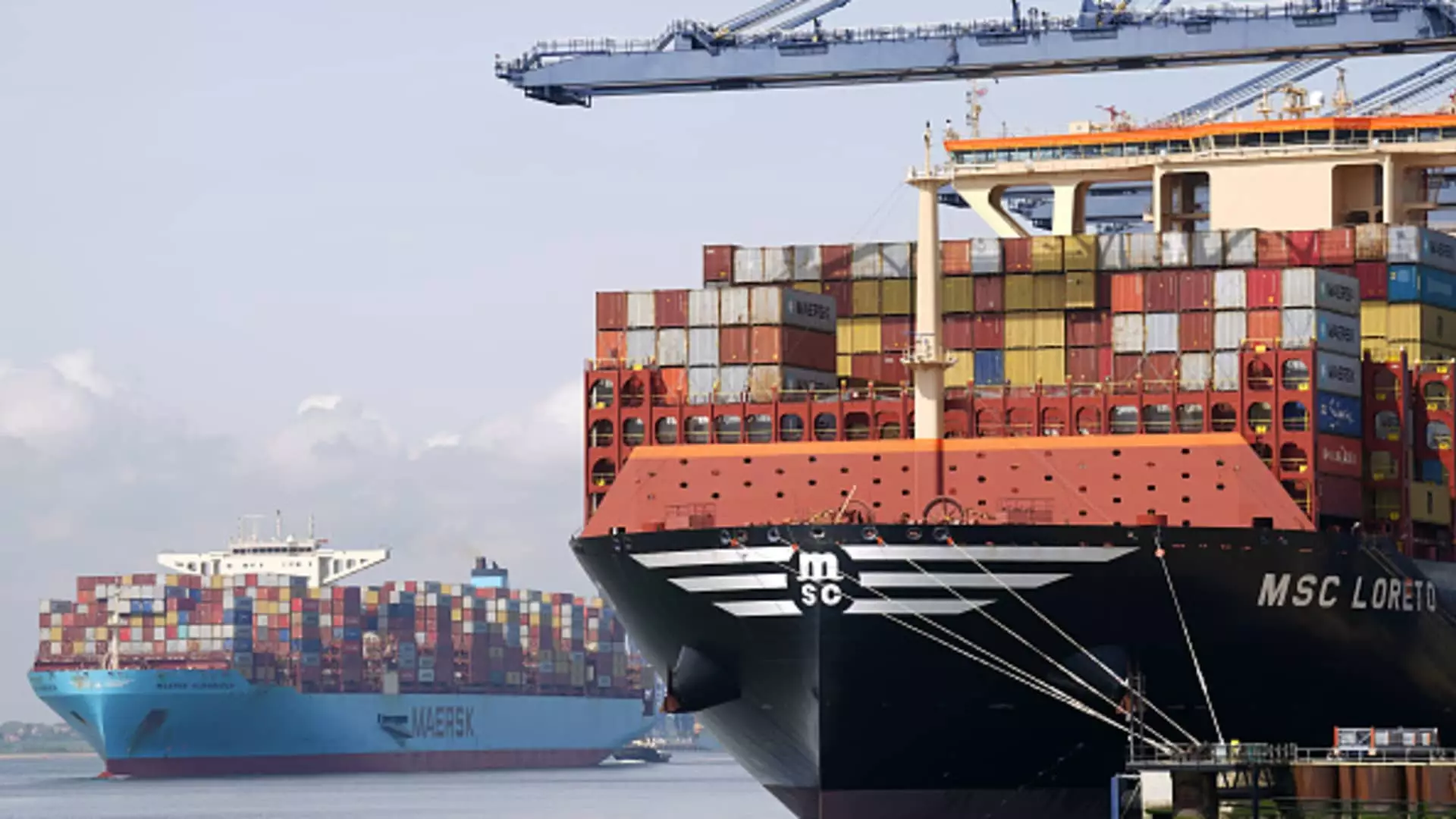As we approach the first quarter earnings season of 2025, stakeholders in global markets are enveloped in a haze of anxiety, largely due to the unpredictability stemming from President Donald Trump’s tariffs. This situation is dire, as tariffs imposed in April have not only rattled investor confidence but also created an economic environment that experts had not anticipated—even in their most pessimistic scenarios. The implications of escalating trade tensions between the U.S. and major trading partners like the European Union and the U.K. raise critical questions regarding the stability of international commerce.
Negotiators from these regions are scrambling to mitigate the fallout from Trump’s administration’s broad tariffs—set at 25% for certain imports and 10% for others—while grappling with additional tariffs impacting essential industries like steel, aluminum, and automotive manufacturing. This mess is a direct reflection of a governance style that thrives on volatility rather than consistency, perpetuating a climate of fear that envelops not just investors, but consumers and workers alike.
Corporate Earnings: A Preview of Dissent
Investors are already receiving a glimpse of what may lie ahead from preliminary earnings reports out of Europe. Luxury brand LVMH has issued warnings regarding its vulnerable sectors, indicating a potential pullback from what it terms “aspirational clientele.” Meanwhile, crucial semiconductor manufacturer ASML raised alarms about tariff-induced uncertainty around demand, although both companies fell short of providing quantifiable effects on their earnings.
The first-quarter earnings reports due from major players in the market will undoubtedly serve as bellwethers for financial sentiment and market stability. Danish shipping giant Maersk, known for its pivotal role in global trade, is poised for earnings reports on May 8. Recent share volatility underscores just how reactive investors have become. Projections suggest that Maersk’s earnings before interest, depreciation, taxes, and amortization will drop significantly from $3.6 billion in the final quarter of 2024 to approximately $2.3 billion. These changes are symptomatic of a broader unpredictability affecting entire sectors, thus magnifying the extent of uncertainty surrounding trade dynamics.
Sector Vulnerabilities: Oil, Autos, and Aviation
This entire situation further complicates the outlook for energy firms like Shell, set to report on May 2. The company’s recent announcements to turbocharge shareholder returns and pivot towards liquefied natural gas have been upended by unexpected maintenance issues that impact production and create fresh profit concerns. As oil prices remain unpredictable, Shell’s adjusted earnings are expected to decline sharply, another indicator that the ripple effects of tariffs extend well beyond early revenue reports.
The automotive sector, particularly Germany’s Volkswagen, is bracing for a similar fate amid growing panic over tariffs affecting Canada and Mexico. Though Volkswagen aims for higher year-on-year revenue, the overarching geopolitical climate casts a long shadow of doubt. This is even more concerning considering the critical components sourced from Europe that embellish vehicles assembled in the U.S.
Equally alarming is the uncertainty gripping the aviation industry. Lufthansa, set to release results on April 29, faces challenges from not just tariffs, but also strikes and global price pressures. Adding to these woes, upcoming findings about diminished international travel demand could suggest a notable shift in consumer behavior driven by economic angst, resulting in a tough and possibly unsustainable environment for major airlines.
Pharmaceutical Sector: Navigating Uncharted Waters
The pharmaceutical sector stands on an uncertain precipice, with Trump’s recent investigations into the impact of medication imports on national security poised to herald the onset of tariffs on crucial healthcare products. For a company like Novo Nordisk, which dominates the market for diabetes and obesity treatments in the U.S., the looming tariffs present a perilous gamble. Analysts eagerly await the May 7 earnings announcement to discern how the company is preparing for a possibly volatile trading landscape. The implications for U.S. households that rely on these life-saving medications could be devastating.
As we dissect the diverse sectors grappled by these uncertainties, the critical analysis underscores a disheartening trend—that of misguided governance and policy decisions aimed more at posturing than functional economics.
This atmosphere of unpredictability not only stifles corporate confidence but also engenders a climate where the average citizen feels the repercussions. Amidst these economic tremors, it remains vital for all stakeholders to prioritize a coherent strategy to not only avert immediate disaster but to work together for longer-term stability.

